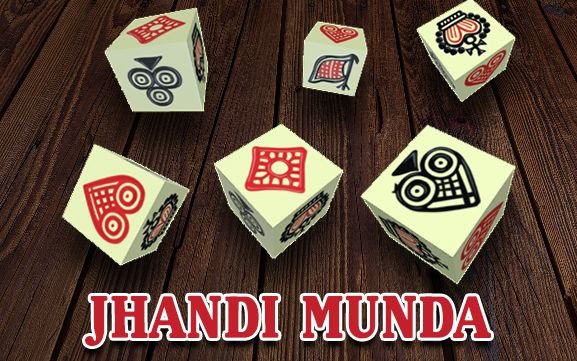Jandi Munda is a popular traditional dice game originating from the rural regions of India, especially in states like Punjab. It is a simple, yet exciting gambling game that requires both luck and strategic betting. The game is often played during festivals and fairs and has now gained popularity online as well.
Game Setup:
The game uses six six-sided dice, with each side marked with different symbols or numbers.
A typical set of symbols might include a heart, spade, diamond, club, and two other icons, but the exact symbols can vary.
Rules of Jandi Munda:
- Placing Bets: Players place their bets on one of the six symbols, predicting which symbol will appear most frequently when all six dice are rolled.
- Rolling the Dice: All six dice are then rolled simultaneously.
- Outcome and Payout: After the dice are rolled, the symbol that appears the most times wins. Players who bet on that symbol receive a payout, which is often determined by the number of times the symbol appeared. For instance:
If a player’s symbol appears on one die, they might receive a 1:1 payout.
If it appears on two dice, the payout increases proportionally.
Strategy:
While Jandi Munda is largely based on luck, experienced players might try to recognize patterns in previous rolls or spread their bets across multiple symbols to increase their chances of winning. However, since the dice rolls are random, the outcome is always unpredictable.
Cultural Significance:
Jandi Munda is more than just a game of chance; it has social and cultural significance in rural India. It’s often played during special occasions, bringing communities together to enjoy the fun and excitement of the game. The simple setup and minimal equipment make it accessible to people of all ages and backgrounds.
In modern times, Jandi Munda has made its way to online platforms, allowing people to play virtually from anywhere, adding a digital twist to this traditional game.
